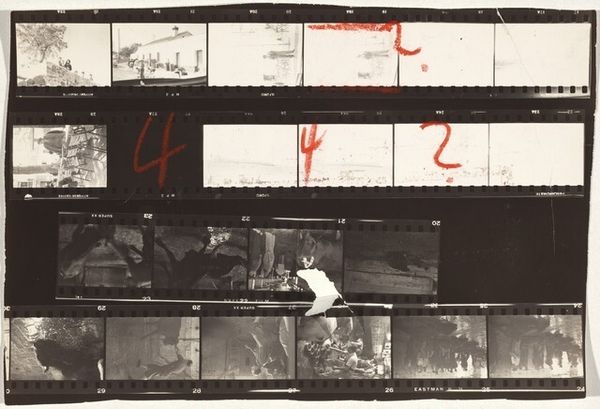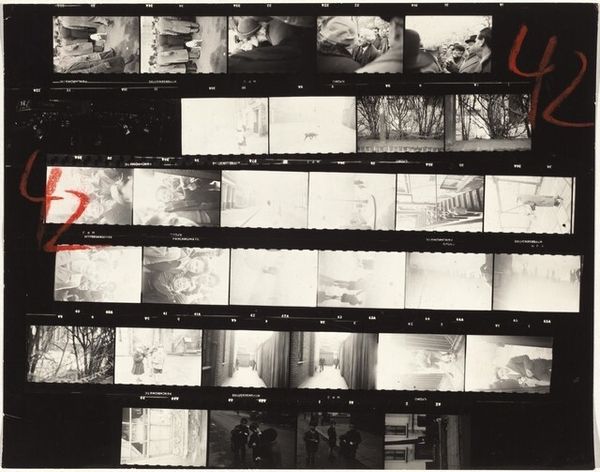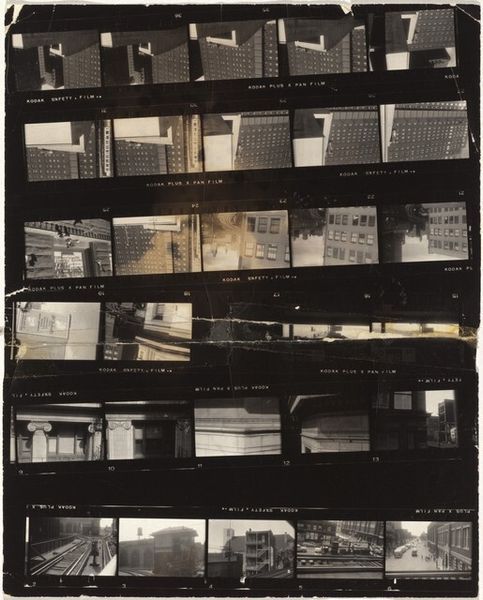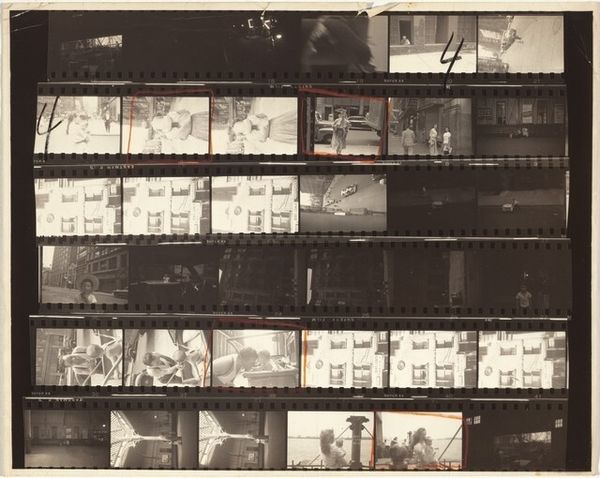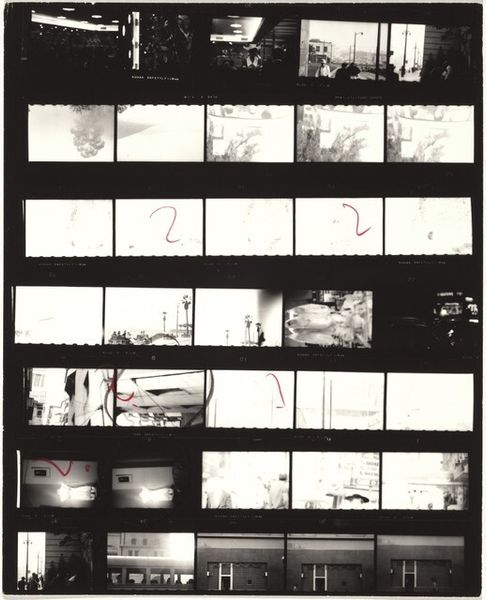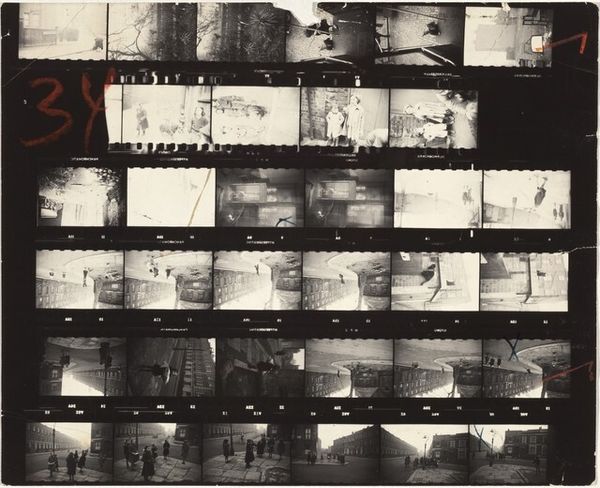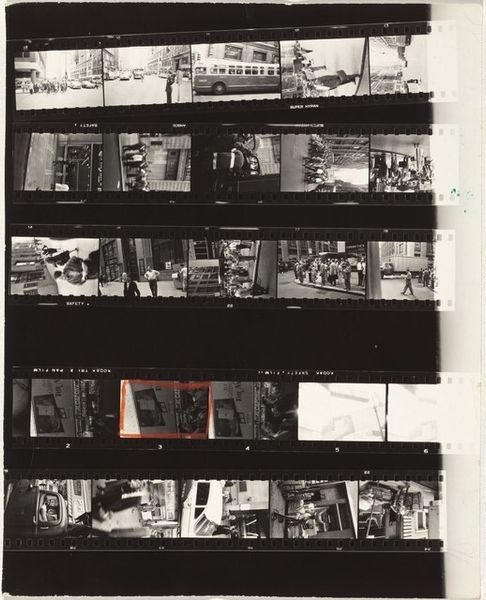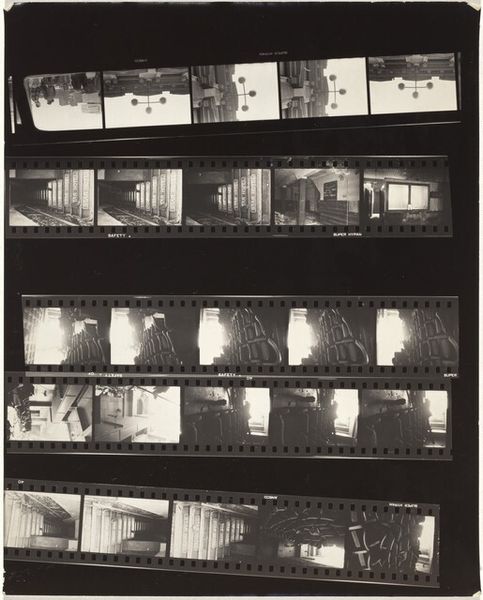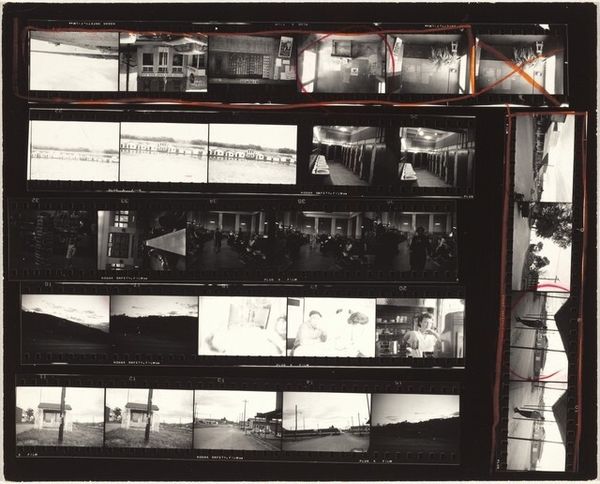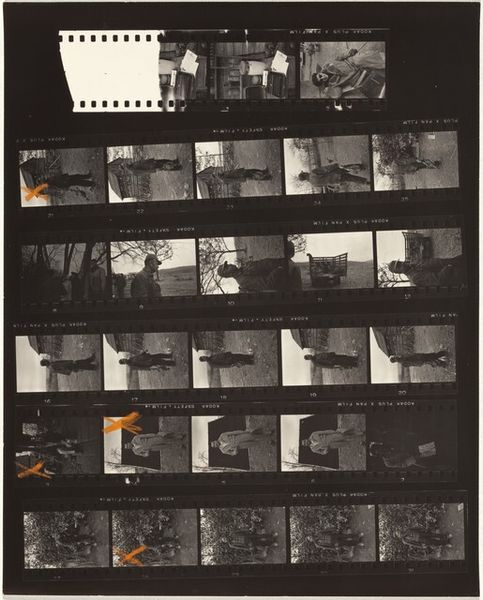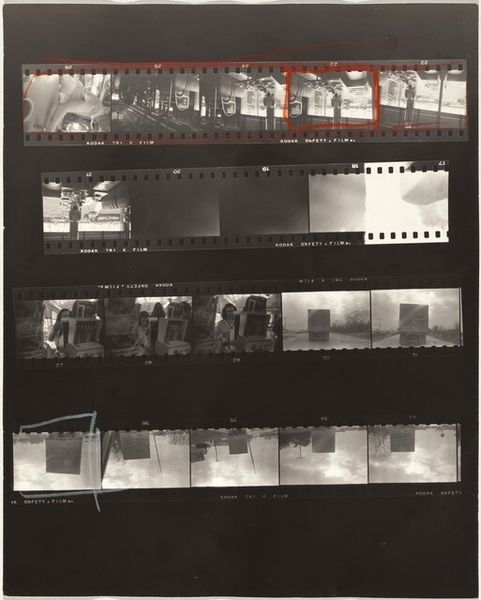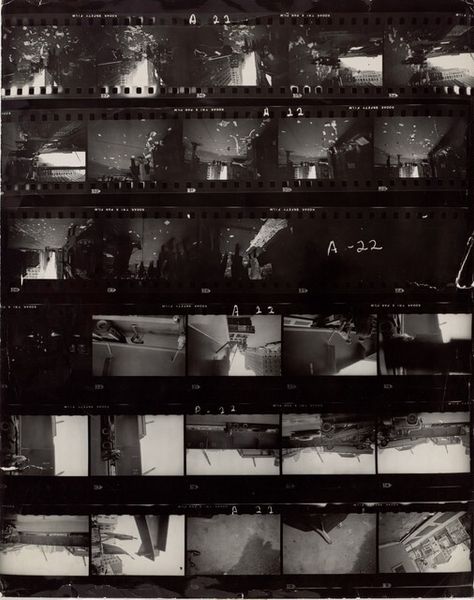
contact-print, photography
#
abstract-expressionism
#
landscape
#
contact-print
#
photography
#
photojournalism
#
modernism
Dimensions: overall: 25.3 x 20.4 cm (9 15/16 x 8 1/16 in.)
Copyright: National Gallery of Art: CC0 1.0
Curator: Robert Frank's contact print, "On ship—New York to Paris 7" from 1949 offers a unique window into the photographer's process. What strikes you initially about this work? Editor: The immediate impression is fragmented. Rows of images, some clear, others almost blank, all held together by the black frame of the negative. The red grease pencil slashes on a few frames disrupt any linear narrative; it's as if the artist is actively preventing a straightforward reading. Curator: Precisely! This work's strength lies in its materiality and the artist's hand. Frank presents the raw evidence of his working method. We see the film strip itself—its sprocket holes, its imperfections, and those marks, perhaps pointing to selected frames for enlargement or further consideration. It reminds us of photography's status as both art and industrial manufacturing. Think of the factory conditions needed to mass produce materials. Editor: From a formal perspective, the juxtaposition is compelling. Look at the ghostly quality of some frames against the clarity of others. The contrast enhances the texture. Even the way the images are cropped by the edges of the print introduces dynamism, playing with rhythm and form. The hat silhouettes feel like compositional anchors. Curator: Those silhouettes resonate, especially considering the post-war migration this voyage suggests. Frank, a Swiss émigré, captured a slice of that era's transatlantic crossings, the ship serving as both literal vessel and a container for hopes, dreams, and anxieties linked with the American Dream. Editor: Yet the medium here also dictates the message. The photograph offers a specific tone. Those selected images near the bottom of the strip contain a striking tonal complexity, that play against the flatness of the obscured strips higher up the print, generating movement. Curator: True, and there’s a wider context; we must consider the labor required to create this and consider who benefitted and suffered along that journey. The print prompts consideration of those economic disparities embedded in the image-making process and the journey of many attempting new lives elsewhere. Editor: Interesting to consider. Despite its seeming disarray, there’s a rigorous structure to it, a conscious design that emphasizes visual interplay, echoing themes that are so embedded within the broader scope of postwar photographic development. Curator: Absolutely, each time I revisit this piece, I'm reminded how its process and materiality encourage considerations about artmaking that open a deeper reading on an entire era of transnational exchanges and human movement. Editor: Indeed, for me, this particular image offers a concentrated case study in form and tonal contrast.
Comments
No comments
Be the first to comment and join the conversation on the ultimate creative platform.
